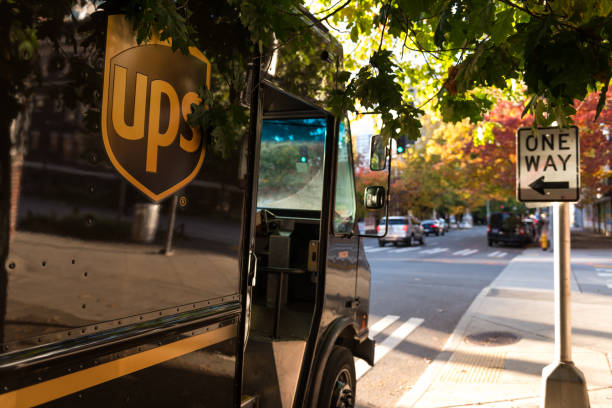UPS has announced a significant workforce reduction, cutting approximately 20,000 jobs and closing 73 facilities across the United States. This move is closely linked to a sharp decline in shipments from Amazon, one of UPS’s largest clients. The layoffs mark one of the largest in UPS’s recent history and signal a shift in the logistics landscape shaped by evolving e-commerce dynamics. Image credit: gettyimages
Background: The UPS-Amazon Relationship
For years, Amazon has been a major revenue driver for UPS, accounting for an estimated 15-20% of its parcel volume in recent years. The partnership helped UPS scale rapidly during the e-commerce boom, with Amazon relying heavily on UPS for last-mile deliveries and regional logistics. However, Amazon’s increasing investment in its own logistics network has gradually reduced its dependence on third-party carriers like UPS.
According to Forbes, Amazon’s internal logistics now handle over 50% of its shipments, a strategic shift that has pressured UPS’s business volumes.
Details of the Layoffs
The layoffs will primarily affect hourly workers at UPS’s sorting and distribution centers, with 73 facilities slated for closure or downsizing. The company cited a combination of factors behind the cuts:
- Reduced shipment volume from Amazon and other key customers
- Economic uncertainty and inflationary pressures
- Increased automation and use of robotics in sorting facilities
- Tariffs and supply chain disruptions impacting global logistics
UPS CEO Carol Tomé stated in the company’s April 2025 earnings call,
“While these decisions are difficult, they are necessary to align our cost structure with the evolving market realities and to invest strategically in automation and technology.”
Amazon’s Position
Amazon itself has undergone restructuring and layoffs in early 2025, cutting thousands of corporate jobs as part of a broader cost-cutting initiative. CEO Andy Jassy emphasized a renewed focus on operational efficiency and culture realignment in his recent statements.
Amazon’s growing logistics network, including its own delivery vans, drones, and fulfillment centers, reduces its reliance on UPS and other carriers. This shift has created ripple effects across the logistics industry, forcing companies like UPS to recalibrate their business models.
Economic and Industry Impact
The layoffs have impacted UPS’s stock price, which fell 8% following the announcement, reflecting investor concerns about volume declines and margin pressures. Analysts from Bloomberg warn that the logistics sector faces ongoing disruption as e-commerce giants internalize delivery operations.
Unions representing UPS workers have criticized the layoffs, calling for better communication and support for affected employees. Industry experts suggest that automation and changing customer behaviors will continue to reshape logistics jobs in the coming years.
Future Outlook
UPS plans to invest heavily in automation technologies and diversify its customer base beyond Amazon to stabilize revenues. The company is also exploring green logistics initiatives as part of its long-term strategy.
Meanwhile, Amazon’s logistics ambitions suggest it will continue to expand its delivery footprint, potentially disrupting traditional carriers further. Small businesses and consumers may benefit from faster and more integrated delivery options, but the transition poses challenges for legacy logistics providers.
Conclusion
The UPS layoffs of 2025 underscore the rapidly evolving nature of the logistics and e-commerce sectors. As Amazon reshapes its shipping strategy, UPS must adapt to maintain competitiveness through technology and diversification.
What are your thoughts on these changes in the logistics industry? Share your views in the comments below.
Keywords: UPS layoffs 2025, UPS job cuts, UPS Amazon partnership, UPS facility closures, UPS workforce reduction, Amazon logistics impact, logistics industry layoffs, 20,000 UPS layoffs, UPS restructuring 2025, UPS cost-cutting strategy, Amazon delivery volume drop, UPS tariff impact, logistics sector job losses, UPS union response, Teamsters UPS layoffs, supply chain layoffs 2025, shipping industry layoffs, UPS automation impact, UPS economic outlook, logistics market 2025, UPS and Amazon relationship, UPS labor contract, global logistics restructuring, UPS delivery drivers layoffs, e-commerce logistics layoffs, UPS facility shutdowns, UPS labor disputes, UPS operational changes, Amazon logistics volume decline, UPS savings plan 2025, UPS recession warning
Disclaimer: Transparency is important to us! This blog post was generated with the help of an AI writing tool. Our team has carefully reviewed and fact-checked the content to ensure it meets our standards for accuracy and helpfulness. We believe in the power of AI to enhance content creation, but human oversight is essential.






You need to be a part of a contest for one of the greatest sites online.
I’m going to highly recommend this website!
Your comment truly made our day! It’s an absolute honor to have readers like you who not only find value in the content, but also feel inspired to recommend it to others.
Your encouragement motivates us to keep raising the bar and delivering meaningful ideas and insights. If there are topics you’d love to see covered or discussions you want to join, please feel free to share—I’m always eager to connect with engaged readers.
Thanks once again for your generous words and recommendation. Here’s to learning, sharing, and building an even greater community together!
Regards,
AiTech Quest Team